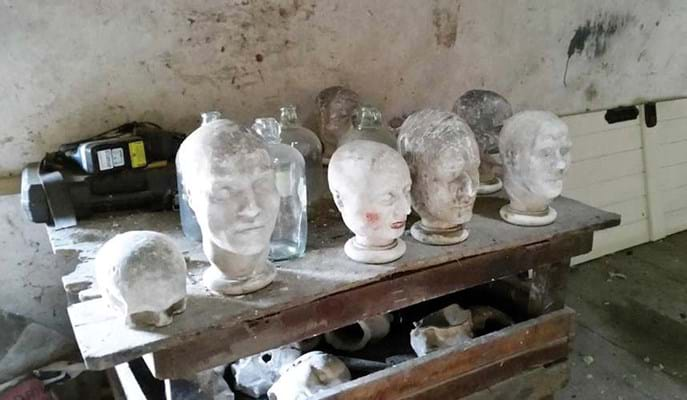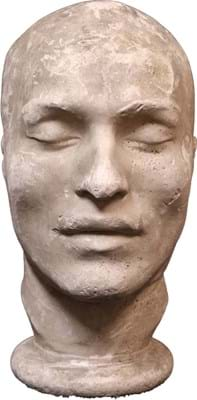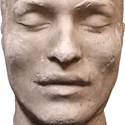Steven Parkinson, auctioneer and valuer at Thomson Roddick in Carlisle, encountered a table full of more than a dozen early to mid-19th century plaster heads when valuing the contents of a rural estate near Penrith.
“I was told there was ‘nowt of interest’ in the outbuildings but we auctioneers always persist.” He was amused to see one head had been decorated with lipstick and rouge – evidence that it had been used by the vendor’s daughter for make-up practice.
While many interested parties were keen to purchase the nine lots close to their £100-200 estimates, come January 27 four bidders proved rather more committed. In particular, a collector from the south of England bidding via thesaleroom.com proved successful on seven lots, paying a massive £20,000 (plus 20.5% buyer’s premium) for a head annotated with the name of the subject, Francois Benjamin Courvoisier, murderer of Lord William Russell and the date May 1840. It was further signed Brucciano, Waterloo Bridge, probably for Nicolao Brucciani (b.1780), a member of a family of plaster figure makers who came to England c.1820.
Courvoisier (1816-40), a Swiss-born valet facing the sack, confessed to cutting the throat of his employer who lay sleeping in his Park Lane home following a night at Brooks. A crowd of around 40,000 witnessed the hanging outside Newgate Prison on July 6, 1840, including William Makepeace Thackeray, whose influential essay denouncing capital punishment, On going to see a man hanged, documented the morning’s events.
Other lots, all with condition issues, took between £650 and £2000 each. Most were unmarked but others gave possible clues to identity through dates and model numbers.
Sold at £1300 was a bust carrying the name J. DeVille, 367 Strand, London and the publishing date of May 23, 1842. James Deville (1777-1846), whose lengthy obituary was published in the Phrenological Journal and Magazine of Moral Science, took his first post-mortem cast in July 1817, later building a private museum of over 5000 specimens.
This particular head may depict Daniel Good, a coachman from Roehampton who was executed at Newgate on May 23, 1842, for the murder and mutilation of his pregnant mistress Jane Jones.
The Metropolitan Police’s Crime Museum has another bust of Good in its extensive collection of plaster heads formed following the closure of Newgate Prison in 1902.













